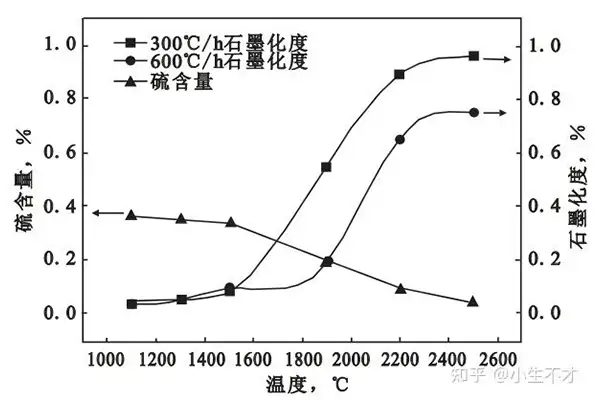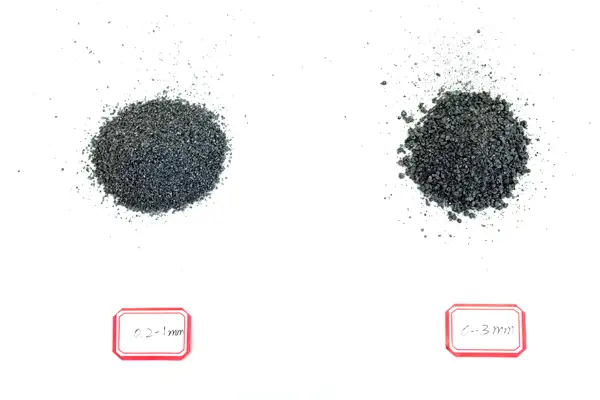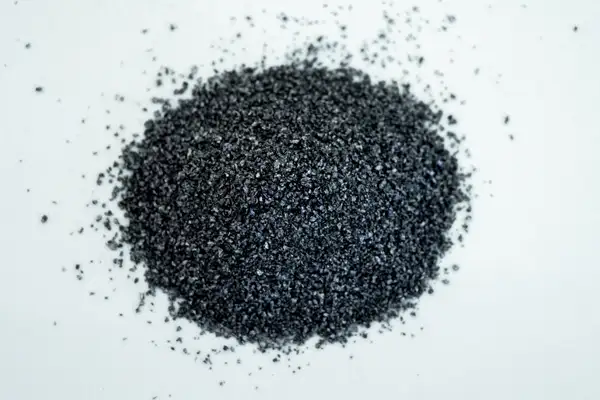Zhengzhou ChangHeYue New Material CO.,LTd
1. Carbon Content
Carbon is the most crucial component of graphitized carburizers. High – quality graphitized carburizers typically have a very high carbon content. Usually, the carbon content in premium – grade graphitized carburizers can reach over 98%, and in some cases, even approach 99.5% or higher. Precise determination of the carbon content is essential as it directly affects the carburizing efficiency in steel – making and casting processes. For example, in steel – making, a specific carbon content is required to achieve the desired mechanical properties of the steel. A lower – than – required carbon content in the graphitized carburizer may lead to insufficient carburization, resulting in steel with sub – optimal strength, hardness, and wear – resistance. Analyzing the carbon content is often carried out using methods such as combustion – infrared absorption spectrometry. In this method, the sample is burned at high temperatures in an oxygen – rich environment, and the carbon in the sample is converted into carbon dioxide. The amount of carbon dioxide is then detected by an infrared detector, and based on this, the carbon content in the sample can be accurately calculated.
2. Sulfur Content
Sulfur is an impurity in graphitized carburizers, and its content needs to be strictly controlled. A low sulfur content is highly desirable. Generally, the sulfur content in good – quality graphitized carburizers should be less than 0.05%, and for some ultra – high – quality products, it can be as low as 0.01% or even lower. High sulfur levels in the carburizer can have a detrimental impact on the quality of the final metal product. In steel, sulfur can cause brittleness, especially at elevated temperatures, a phenomenon known as “hot shortness.” This can lead to cracking during hot – working processes such as forging and rolling. To measure the sulfur content, methods like high – frequency infrared carbon – sulfur analyzer are commonly used. The sample is burned in a high – frequency induction furnace, and the sulfur in the sample is oxidized to sulfur dioxide. The sulfur dioxide is then detected by an infrared sensor, enabling the determination of the sulfur content in the graphitized carburizer.
3. Ash Content
The ash content in graphitized carburizers represents the non – combustible residue after complete combustion of the sample. A low ash content is preferred, typically less than 0.5% for high – quality products. Ash is mainly composed of various metal oxides and other impurities. High ash content can introduce unwanted elements into the molten metal, affecting its purity and properties. For example, in casting, excessive ash may lead to the formation of inclusions in the casting, which can act as sites for crack initiation and reduce the mechanical properties of the casting. The ash content is determined by heating the sample to a high temperature (usually around 800 – 900°C) in a muffle furnace until all the organic matter is burned off, and then weighing the remaining residue. The ratio of the residue weight to the original sample weight gives the ash content.
4. Volatile Matter Content
Volatile matter in graphitized carburizers consists of substances that can be vaporized at relatively low temperatures during heating. A low volatile matter content, usually less than 0.5%, is an indicator of good – quality graphitized carburizers. High volatile matter can cause problems during the melting process, such as excessive gas evolution, which may lead to porosity in the final casting. The determination of volatile matter content involves heating the sample in a specific temperature – controlled environment (e.g., 950°C for a certain period) in a muffle furnace. The weight loss of the sample during this heating process is measured, and the volatile matter content is calculated as a percentage of the original sample weight.
5. Graphitization Degree
The graphitization degree is a critical indicator that reflects the quality of graphitized carburizers. A high graphitization degree means that the carbon atoms in the carburizer have a more ordered and graphite – like structure. This results in better carbon absorption characteristics in the molten metal. There are several ways to measure the graphitization degree. One common method is X – ray diffraction (XRD). XRD analysis can provide information about the crystal structure of the carbon in the sample. The more intense and sharp the graphite – related diffraction peaks in the XRD pattern, the higher the graphitization degree. Another method is optical microscopy. By observing the microstructure of the carburizer under an optical microscope, the degree of graphitization can be qualitatively evaluated based on the appearance and distribution of graphite – like structures.
6. Particle Size Distribution
The particle size distribution of graphitized carburizers is also an important factor. Different applications may require different particle sizes. For example, in some steel – making processes, a relatively fine particle size (such as 0.1 – 1 mm) may be preferred as it can provide a larger surface area for rapid carbon dissolution in the molten steel. In casting applications, a coarser particle size (e.g., 1 – 5 mm) might be more suitable to ensure better flowability and uniform distribution in the molten metal. Particle size distribution is usually determined using sieving analysis. The sample is passed through a series of sieves with different mesh sizes, and the weight of the material retained on each sieve is measured. Based on these measurements, the particle size distribution of the graphitized carburizer can be calculated and presented as a percentage of the total sample weight for each particle size range.
In conclusion, these detection indicators play a vital role in evaluating the quality of graphitized carburizers. Precise control and accurate measurement of these indicators are essential for ensuring the proper performance of graphitized carburizers in various metallurgical applications, such as steel – making and casting, and for producing high – quality metal products.






